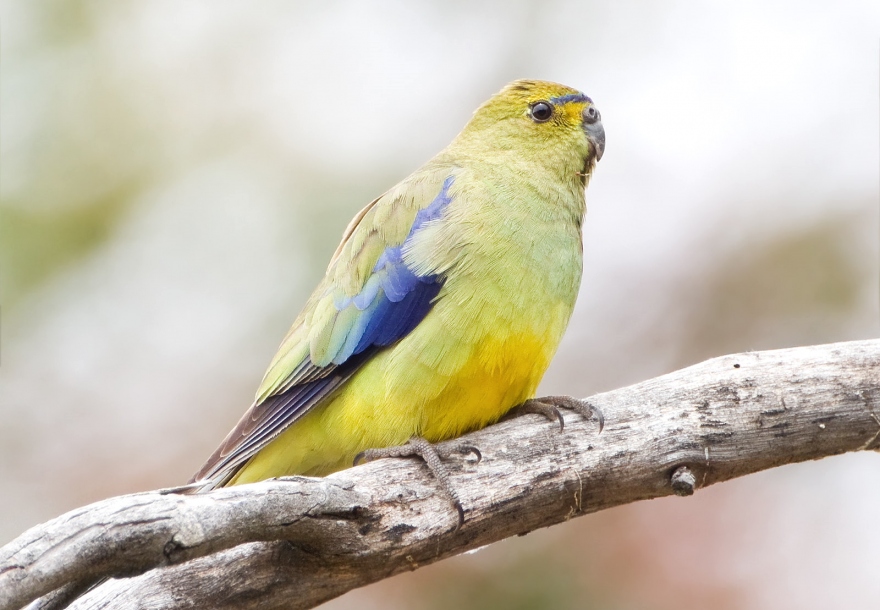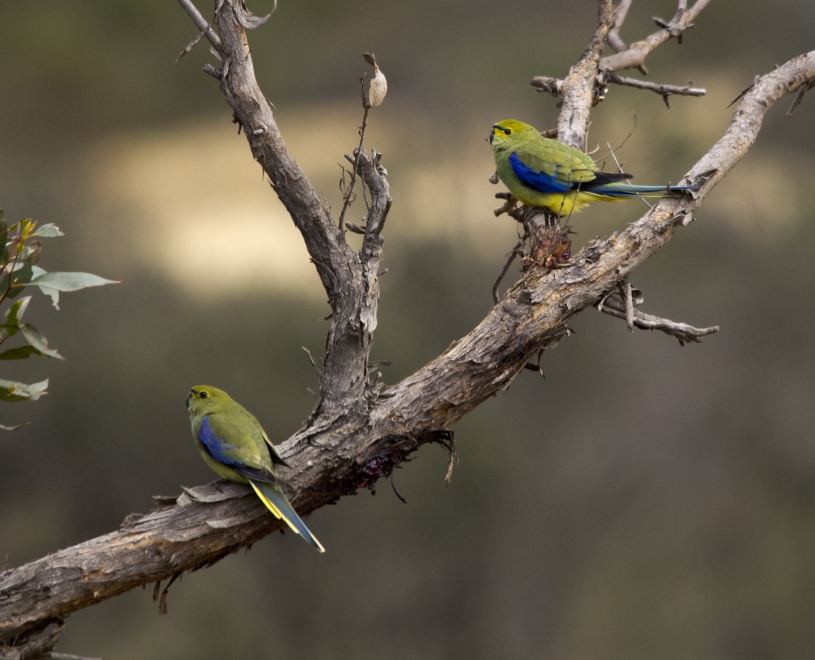Blue-Winged Parrots are a small grass parrot found in South-Eastern Australia (including Tasmania). They are one of the less commonly kept members of the Neophema genus but are nevertheless quite well established in Australian aviculture.

Housing & Compatibility
Blue-winged parrots can be kept in a wide variety of different aviary types, including cages, traditional aviaries and suspended flights. They love to forage on the ground, so a natural aviary floor is preferred if parasites and other health issues can be controlled.
Blue-winged parrots are usually very placid and can cohabitate with other small placid parrots, finches and quail. Do not house them with other species in the Neophema genus, as hybridization may occur.
They should be provided with an adequate amount of flying space to ensure they receive sufficient exercise. Birds that do not have room to fly may suffer from stress or obesity. Two meters of uninterrupted flying space is recommended.
Young birds have poor flight skills and can crash into wire at great speed in large aviaries. Some kind of cushioning is useful to prevent accidents.
Non-toxic leaves and branches should be provided for chewing. They will be destructive to foliage in a planted aviary.
Breeding Blue-Winged Parrots
Blue-winged parrots will breed from twelve months of age, but best results are achieved once the birds reach two years. The breeding season is from spring through to early summer, though breeding is occasionally attempted at other times of the year.
Blue-winged parrots are slightly more difficult to breed than the more common Neophema parrots, such as the scarlet-chested parrot and turquoise parrot. That’s not to say they’re a particularly challenging species to breed, as an aviculturist with only moderate experience is unlikely to struggle.
A medium sized nesting box or hollow log will be used. Blue-winged parrots will generally only produce a single clutch each year, each containing between 3-6 young. Second clutches may occur when breeding commences unusually early in the season.
Eggs are incubated for approximately 18 days and fledge the nest at four weeks of age. They become fully independent 3-4 weeks later. It is safe to keep young birds with their parents, however it’s wise to use leg rings as they will become indistinguishable at about six months of age.
Mutations
Mutations have been established. Known mutations include cinnamon, blue, and pastel. Others presumably exist in small numbers. Mutation blue-winged parrots have a reputation for being short-lived and challenging to breed.
Due to the ease at which Neophema parrots will hybridize with other birds in their genus, it’s worth noting that an apparent mutation may actually be the result of cross-breeding.
Sexing
Males are brighter in colour than females. The difference can be subtle, so DNA sexing may be required to get a truly accurate sex assessment.

Diet & Feeding
A high quality seed mix forms the basis of the blue-winged parrot’s diet. Large bags of small parrot mix or Peachface seed mix can be purchased from reputable aviary stores. Seed should be stored in an airtight plastic drum to prevent exposure to vermin and moisture. It can be soaked or sprouted to improve its nutritional value.
Blue-winged parrots especially enjoy eating green seeding grasses, just as they would in the wild. Unless the aviary is immensely large and grasses can grow faster than the birds can consume them, it may be necessary to plant seeding grasses into pots which can be rotated out to allow the plant to recover. It’s a good idea to plant some of your purchased seed mix in pots, not just because birds love seeding grasses, but to confirm the quality of your seed supply.
They should be provided with a wide variety of fruit and vegetables. Green leafy vegetables are especially important. Kale, bok choy, endive, corn, apple, pear and carrot are particular favourites. As with all birds; avocado, chocolate, caffeine and alcohol are toxic and should not be fed.
They are known to sometimes consume insects when breeding, especially if housed with other insect-eating bird species from whom they can learn this behaviour. Mealworms are most commonly offered. Nutritional supplements such as soft foods and pelleted food can also be offered.
Health & Lifespan
As a grass parrot species, blue-winged parrots spend a significant amount of time foraging at ground level. It’s important to keep the aviary floor clean and dry. A preventative worming and parasite control regime should be used.
A healthy blue-winged has a life expectancy of ten years in captivity. Anecdotal observations suggest that they can live twice that long if cared for correctly.